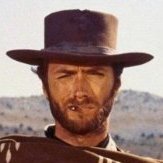Cambodia marks 40 years since evacuation of Phnom Penh
-
Recently Browsing 0 members
- No registered users viewing this page.
-
Topics
-
-
Popular Contributors
-
-
Latest posts...
-
383
Do you know your wife/girlfriends body count?
fred, all the name calling you do here, calls into question the veracity of your claims that it was your partners who were at fault. -
18
-
31
‘They’re skin and bones’: doctors in Gaza warn babies at risk of death from lack of formula
I provided my logic. You’ve provided zilch. -
250
-
383
Do you know your wife/girlfriends body count?
Yes, you (along with your other 4 usernames, M and H. You all fit together well, and are like peas in a pod. You help no one here, but can't pass up a chance to judge people you don't know. -
77
Trump's most ardent supporters are in revolt
Liar. Oh, that sucks. Someone else used your "go to" response.
-
-
Popular in The Pub



.thumb.jpeg.d2d19a66404642fd9ff62d6262fd153e.jpeg)







Recommended Posts
Create an account or sign in to comment
You need to be a member in order to leave a comment
Create an account
Sign up for a new account in our community. It's easy!
Register a new accountSign in
Already have an account? Sign in here.
Sign In Now